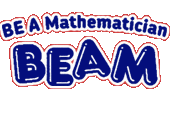Years 3 & 4: Geometry
This list consists of activities, games and videos designed to support the new curriculum programme of study in Years 3 and 4. Containing tips on using the resources and suggestions for further use, it covers:
Year 3: Draw 2-D shapes and make 3-D shapes using modelling materials, recognise 3-D shapes in different orientations and describe them, recognise angles as a property of shape or a description of a turn, identify right angles, recognise that two right angles make a half-turn, three make three quarters of a turn and four a complete turn, identify whether angles are greater than or less than a right angle, identify horizontal and vertical lines and pairs of perpendicular and parallel lines.
Year 4: Compare and classify geometric shapes, including quadrilaterals and triangles, based on their properties and sizes, identify acute and obtuse angles and compare and order angles up to two right angles by size, identify lines of symmetry in 2-D shapes presented in different orientations, complete a simple symmetric figure with respect to a specific line of symmetry, describe positions on a 2-D grid as coordinates in the first quadrant, describe movements between positions as translations of a given unit to the left/right and up/down, plot specified points and draw sides to complete a given polygon.
Visit the primary mathematics webpage to access all lists.
Faces Co-ordinates
Based on the game of battleships, this activity is an effective way of practising grid references and co-ordinates. Children take it in turns to roll two dice and place a counter on the board; the faces of the dice determine the co-ordinates where their counter can go.
Included in the activity are instructions on how to play and two game-boards, each with a grid of 36 faces. One board contains numeric grid references on the y axis and letters along the x axis, the second board has only numeric grid references.
Paper Magic: Folding Polygons
Use coloured paper to create polygons including a square, triangles, kites, rhombi, and a regular pentagon, hexagon and an octagon. This hands-on activity links well with following instructions in literacy and could help children find out about the properties of different shapes. The colourful shapes could be part of a great classroom display too!
Starting Algebra / Shape and Space
A collection of 20 activity sheets which could be used in class to practise various aspects of shape and space. Aimed at curriculum levels 1-3, there are opportunities for using them with the whole class or to support children with work in data handling. The shape and space activity sheets start at page 50 of the pdf.
Shape and Space
The first 6 minutes of this video show how children are guided into constructing 3-D shapes from 2-D diagrams using drinking straws and modelling dough. This is a great way of learning about the properties of 3-D shapes, including faces, edges and vertices and also a great way of assessing this learning. In the plenary, children play a game where they listen to the properties of a shape being described. including the shape of the faces. This idea could link into the resource Amazing Triangles below.
Amazing Triangles - Science
The triangle is a strong shape and is the basis of building many structures. Look for 3-D shapes in the real world and then have fun building building cubes and triangular-based pyramids using sweets and cocktail sticks. This activity will help children experience how 3-D shapes are constructed from 2-D shapes and their use in the real world. It also links into work on D&T. Challenge children to build a structure that uses both triangles and squares, looking at criteria such as height or strength.
2D and 3D Shapes
The first five activities allow children to work in groups, sorting and classifying shapes according to their properties. The activity 2D shapes classification allows children to develop thinking skills whilst working collaboratively classifying shapes according to their own criteria. Other activities link into this one and could be used in main activity group work.
Shape and Space Activities
Page 14 is an activity carried out in pairs which helps children describe and visualise 2-D shapes. A suggestion for extension is to create a mirror image of the pictures. Children could create their own pictures using 2-D shapes and write instructions for how to create them, This activity also helps children learn about position, direction and making clockwise and anticlockwise turns.
Symmetry
This resource comprises a series of activities linked to reflective symmetry. Children identify lines of symmetry in 2-D shapes by folding them. It also looks at pictures of different objects asking children to spot lines of symmetry. There is an activity where children complete pictures reflected in a mirror line.
Reflective Symmetry
Links to a lesson idea for teaching reflective symmetry. It also includes a symmetry artist drawing tool which produces images which exhibit reflective symmetry as you draw. Children could create their own pictures and patterns in a linked maths ICT lesson or as one activity as part of the main lesson.
Shape Games for Students Aged 9-11
Angles is a game for 2 players. Children identify acute and obtuse angles in different shapes. This activity is suitable for use as a classroom activity after teaching children about different angles. A complementary activity could be to give children a series of cards showing different angles up to 180 degrees and asking them in pairs to order them from smallest to largest. Then to sort them into acute or obtuse angles.
The Co-ordinates grid game is an opportunity for children to practise plotting co-ordinates.
Name that shape can be used to practise the number of right angles or number of lines of symmetry in 2-D shapes. Could also be used to plot given points and to draw and identify different polygons with children working in twos to find them all as fast as they can.









